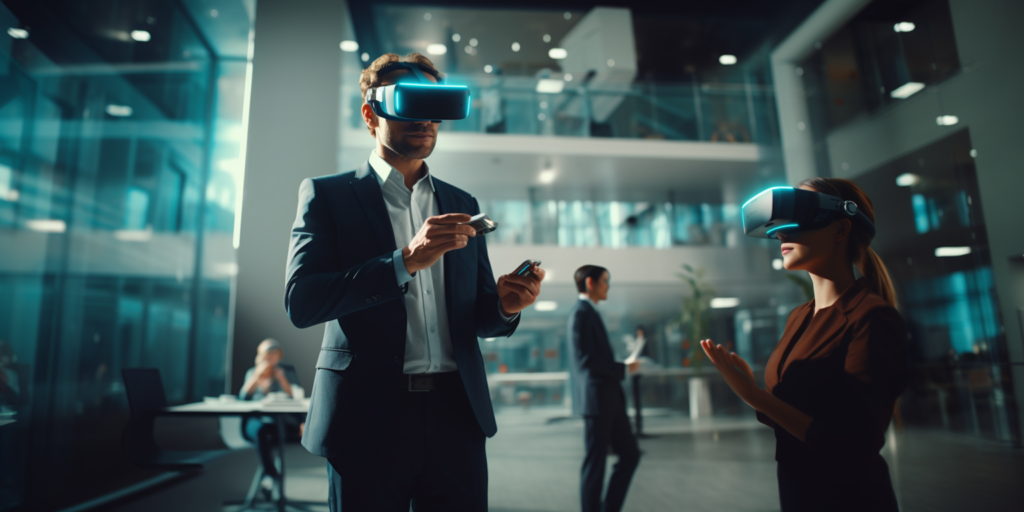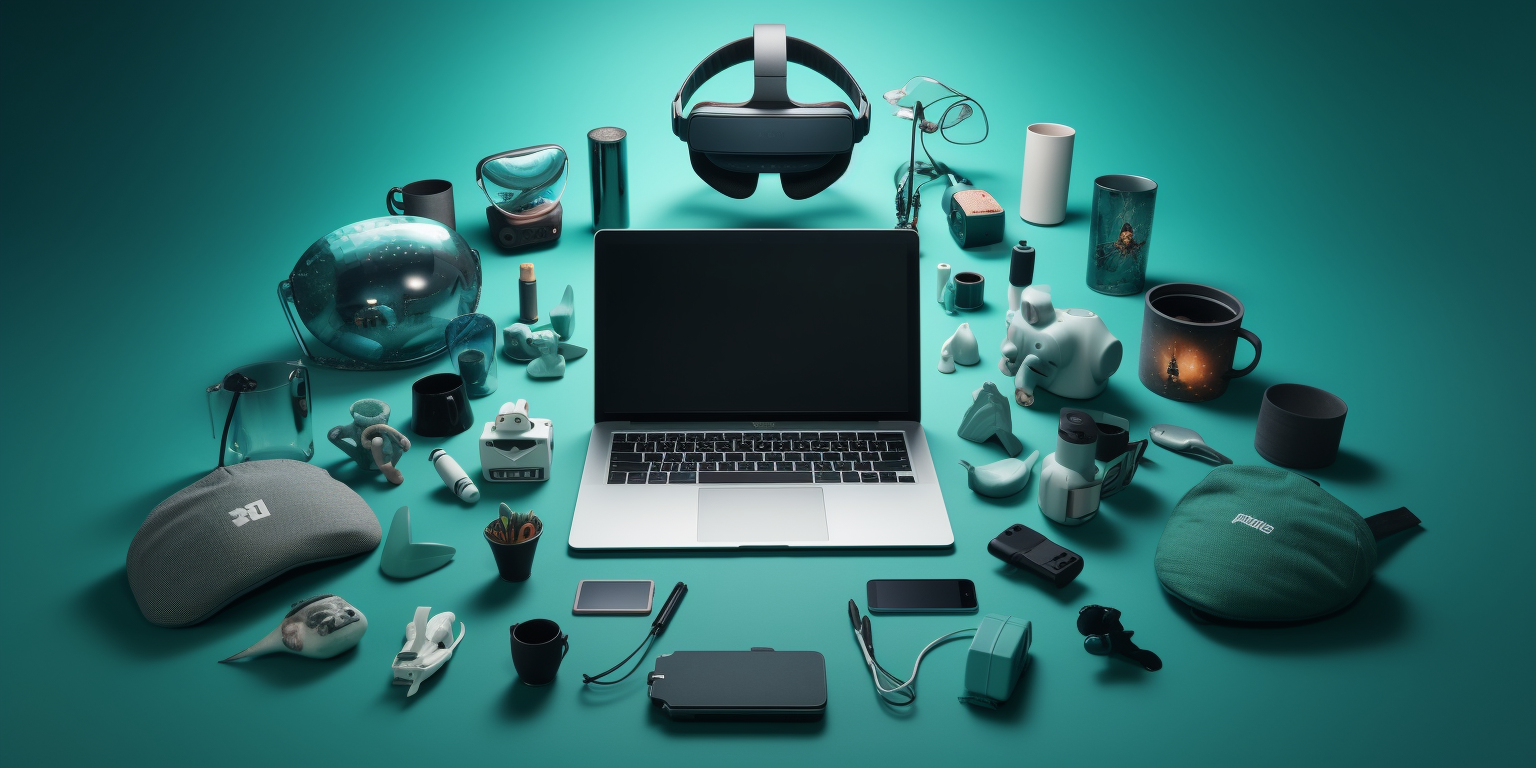Choosing the right immersive technology for your learning needs
Read time : 5 minute
Immersive learning is becoming increasingly popular as a practical way to involve learners and offer them a richer experience. This learning approach closes the divide between theoretical understanding and real-world use, making it easier to apply what’s learned to practical situations. However, with the variety of options available, making the right choice isn’t always straightforward.
What is immersive learning?
Let’s begin by establishing the context and clarifying our understanding of immersive learning.
Immersive learning is a training method that aims to fully engage the learner within a particular scenario, thereby enhancing the learning experience. This stands in contrast to non-immersive methods where the learner plays a passive role, merely receiving the content as an observer.
According to this definition, it’s feasible to introduce a light level of immersion even in traditional slide-based e-learning formats. This can be achieved by crafting a dedicated narrative that places the learner in a specific role throughout the module. However, it’s worth noting that various specialized technologies are available to enhance this immersion further.

Key benefits of immersive learning
1. Enhanced Engagement
One of the main benefits of immersive learning is its knack for grabbing learners’ attention and sparking their interest. By immersing learners in interactive and dynamic settings, their senses and curiosity are triggered. This higher level of engagement encourages them to actively take part and explore, nurturing a stronger bond with the subject matter. As learners navigate through lifelike situations and interactive simulations, their involvement in the learning process deepens, adding a layer of enjoyment and motivation to education.
2. Deeper and experiential learning
Immersive learning offers a distinctive chance for experiential education, enabling learners to directly engage in different situations and contexts. By means of simulations and virtual experiences, learners can safely hone skills, make choices, and examine outcomes within a controlled, personalized, and adaptable setting. This practical approach enhances comprehension and boosts knowledge retention.
3. Complex concept comprehension
This learning approach proves highly effective in conveying complex or abstract concepts that might be tough to grasp through conventional approaches. By visualizing intricate ideas in interactive, three-dimensional environments, learners can examine the subject matter from various perspectives, boosting their understanding. This ability to animate theoretical concepts simplifies learning and fosters critical thinking abilities.
Zoom on immersive learning formats
Virtual Reality (VR)
VR immerses learners in a computer-generated (or 360° VR video) environment, allowing them to interact with objects and people as if they were physically present. This experience is facilitated by VR headsets and controllers.
It finds its ideal application in high-risk training scenarios or when replicating specific tasks, such as in healthcare, manufacturing, and emergency response. In these contexts, lifelike simulations offer hands-on practice within secure settings.

Alternatively, VR serves to place learners in situations that might be expensive or impractical to set up in reality, such as training for public speaking.
However, while this technology is undoubtedly powerful, it comes with significant limitations:
Cost implications: The development and implementation of VR systems can be costly. Expenses related to hardware, software, and content creation might deter institutions or individuals with limited budgets. High-end VR setups necessitate powerful computers and specialized equipment, making them inaccessible to certain learners.
Format accessibility: Users often require time to get comfortable with the format. Unfortunately, this learning curve can distract from the educational content as users grapple with the new environment, leading to frustration. This can create a performance bias favoring tech-savvy learners.
Health considerations: Extended use of VR can result in discomfort, motion sickness, and eye strain for some users. This is particularly noticeable in experiences involving swift movements or artificial locomotion.
Virtual reality is a potent tool when employed purposefully, yet it can lead to disappointment if regarded solely as a magical solution for enhancing learning. Its implementation comes with costs, and the benefits might not be immediately apparent, partly due to the longer time required for users to become accustomed compared to less immersive technologies. Nevertheless, its capacity to enable learners to experience a wide range of scenarios, some of which might be hazardous or expensive in reality, holds considerable value in specific, well-defined situations.

Augmented Reality (AR)

Augmented reality devices superimpose digital elements onto the physical world, improving how learners perceive their environment and offering pertinent information or interactions.
This technology is especially beneficial for subjects that involve both a requirement for particular real-world scenarios and intricate procedures, such as fieldwork. Apart from the initial learning phase, augmented reality offers immediate guidance and support for professionals in sectors like manufacturing, maintenance, and repair. This aids them in accessing relevant information while carrying out their tasks.
Augmented reality does come with a number of attention points, the main ones being:
Cost implications: While AR utilizes the actual environment and doesn’t demand the creation of an entire 3D world, developing AR applications can still incur substantial expenses. Additionally, the most optimal augmented reality experiences often necessitate dedicated hardware, such as headsets. However, it’s also feasible to run AR applications on smartphones or tablets.
Format accessibility: Although to a lesser extent than virtual reality, users do require some time to become comfortable and fully attentive to the learning content in an AR environment.
Real-World interference: Environmental factors like lighting conditions and physical obstacles can impact the performance of AR applications.
Augmented reality holds value in certain corporate learning scenarios, typically centered around “how-to” guides. It may be less appropriate for training in high-stakes or extreme situations, as its effectiveness hinges on real-world environments. However, it excels at offering a highly visual reference tool, enabling users to revisit the content regularly in a manner that seamlessly integrates with their daily tasks.

3D e-learnings

3D e-learning, at times categorized within the realm of “game-based learning,” leverages 3D graphics to elevate the learning journey through interactive and immersive portrayals of intricate concepts and situations.
Its foremost advantage lies in its technical convenience. Generally, minimal to no setup is needed, and it’s compatible with most corporate laptops and tablets. While it may not achieve the same degree of immersion as virtual reality, it offers a level of visualization and engagement significantly beyond that of conventional e-learning formats.
Where VR will shine with physical object handling but be somewhat inconvenient to cover larger areas and to provide detailed explainations, 3D e-learnings tend to exhibit the opposite strengths: they prove excellent to visualize interactions between characters, work on soft skills and get detailed information and feedback.
However, a few considerations merit attention:
Format accessibility: While 3D e-learnings are more user-friendly than the more immersive alternatives, it remains crucial to ensure that all users can comfortably engage with the format and focus on the content.
Relevance and Avoiding a “Museum” Effect: While the format generally captivates and visually engages, it’s vital to guarantee that the training modules effectively exploit the format to deliver a genuinely interactive experience aligned with learning objectives. They should not simply offer a 3D environment akin to a “virtual table of contents,” where learners merely move between content pieces.
3D e-learnings mark a significant advancement in terms of accessibility when compared to VR/AR alternatives. Although they might not be the best fit for trainings requiring physical manipulation, their “learning-by-doing” approach can substantially enhance learning effectiveness compared to traditional e-learnings. This enhancement holds true as long as users receive adequate onboarding and can adeptly navigate the 3D environment.

3D e-learnings can be used in many fields, such as industrial processes, language courses and soft skills. To know more about how Synquest uses 3D for soft skill trainings, check our Courses page.
360° e-learnings
A variation of 3D e-learnings comes in the form of the 360° version. While both versions share the same devices (laptops, tablets, smartphones), the 360° variant distinguishes itself by employing a 3D camera to recreate an existing environment. In this version, learners navigate through the environment using a method akin to clicking on Google Street-like interactions. This format proves exceptionally fitting for onboarding programs, where the emphasis on familiar surroundings holds utmost significance.

The trade-off with this approach lies in its heightened accessibility compared to the 3D e-learning format, encompassing both content creation and the rapidity with which users can become at ease. However, due to the 360° format relying on images rather than true 3D objects, the level of interactivity with the environment is significantly diminished. This can make the general feeling static and lifeless.
Well suited for high recognizability needs, at the expense of the interactivity compared to full 3D e-learnings, the 360° content can provide a visual and exciting alternative to traditional e-learnings.

Traditional e-learning
Traditional e-learnings refer to digital training modules accessible via online platforms, typically comprising multimedia components like text and videos, and offering varying degrees of interaction.
This format has undergone significant evolution over the past two decades, becoming widely available and easily producible, particularly through robust tools like the Storyline suite.
While adept instructional designers can generate impressive content within this framework, it does tend to lag behind in terms of fully immersing learners within the comprehensive context tied to the learning material.
Does this mean the format should be deemed obsolete? Absolutely not. However, its use should be guided by your specific learning objectives. Traditional e-learnings serve as a valuable means to introduce straightforward knowledge that learners are expected to retain, such as fundamental procedures or high-level product insights.
Moreover, this format can effectively complement more immersive ones. It can be employed to introduce content or provide a refresher after the immersive component has been undertaken.
The e-learning format excels in terms of accessibility. It’s readily available, accessible through MOOCs, and comes in diverse forms such as mobile courses, bite-sized lessons, and videos. However, it primarily entails passive learning and, if solely relied upon, is unlikely to deeply cultivate the skills you genuinely aim to acquire.

Conclusion

Immersive learning experiences require a proper onboarding and an adequate setup for the learners to truly benefit from the experience.
Nevertheless, with appropriate preparation, immersive learning offers learners visual depictions of the concepts they’re studying, provides context for intricate scenarios, and furnishes a secure environment for practicing without real-world consequences. Moreover, it facilitates real-world simulations that aid in comprehending the potential outcomes of decisions.
The ideal learning format for your trainings depends on the topic, the audience, as well as the constraints and requirements you have in terms of accessibility and budget.
Beyond these factors, it hinges on the overarching learning strategy for the given topic, more specifically:
– What are the actual learning objectives?
As the proverb goes, telling ain’t training and merely presenting information falls short of actual training. A basic mobile e-learning module might not suffice if you desire learners not only to memorize but also to analyze, apply, discuss, and ultimately attain a profound comprehension of the subject.
– What would the entire learning journey look like?
How do you intend to combine the chosen learning format(s), whether digital or otherwise? A traditional e-learning module might introduce particular concepts, which can then be practiced in a virtual reality setting, or a coaching session can be coupled with a 3D e-learning module. Depending on your requisites, it could prove wise to blend diverse formats across a distributed timeline.
Get started with 3D e-learnings easily
Explore our catalogue of available courses, ready to integrate to your LMS






